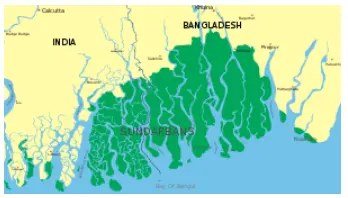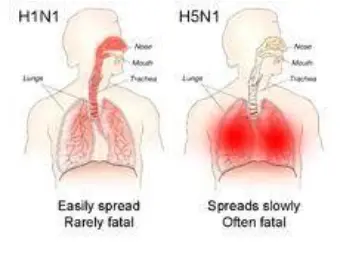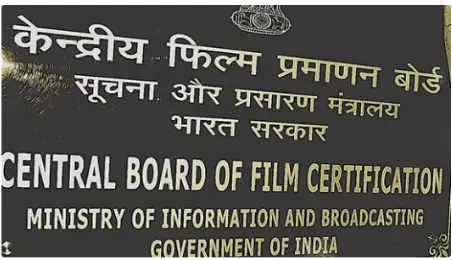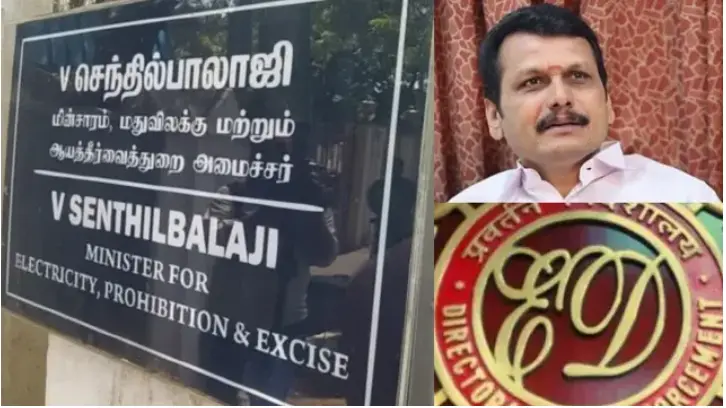Saturday, 30th March 2024
India Employment Report 2024
In News: A recent report titled "India Employment Report 2024," jointly released by the Institute for Human Development (IHD) and the International Labour Organization (ILO), underscores the persistent challenge of high unemployment rates among India's youth.
Key Highlights of the Report
- Poor Employment Conditions
- Despite advancements in overall labor force participation and employment rates, India still faces challenges such as stagnant or declining wages, a rise in self-employment among women, and a notable share of unpaid family work among youth.
- The report underscores that nearly 83% of the unemployed workforce in India comprises youth, with the proportion of educated youth among the unemployed almost doubling from 2000 to 2022.
- Youth Employment Challenges
- Between 2000 and 2019, youth employment and underemployment have surged, particularly impacting educated youth.
- While labor force participation, worker population ratio, and unemployment rates deteriorated between 2000 and 2018, there was a subsequent improvement post-2019, albeit coinciding with periods of economic distress, including pre and post-COVID-19.
- Paradoxical Improvements
- While certain labor indicators have shown improvement over the past two decades, challenges persist in the overall employment scenario.
- Non-farm sectors have not expanded adequately to absorb agricultural workers, with most workers engaged in informal employment.
- Additionally, the decline in regular employment post-2018 poses challenges for India's large young workforce, exacerbated by inadequate digital literacy skills among a significant portion of youth.
- Declining Wages and Earnings
- Real wages of regular workers have either remained stagnant or declined, and self-employed individuals have also experienced a decline in earnings after 2019.
- The report highlights that a considerable proportion of unskilled casual workers did not receive the prescribed minimum wages in 2022, particularly in sectors such as agriculture and construction.
- Changing Structure of Industrial Employment
- The report notes a rapid increase in digitally mediated gig and platform work, which often lacks social security provisions.
- While platform and gig work have expanded, they largely contribute to informal employment, highlighting the need for enhanced labor protections and regulations.
- Expected Increase in Migration
- Urbanization and migration rates are projected to rise significantly in the future, with migration expected to account for a substantial portion of urban population growth.
- The report indicates a regional imbalance in migration patterns, with a general trend from eastern, northeastern, and central regions to southern, western, and northern regions.
- Regional Disparities
- Significant variations in employment outcomes exist across Indian states, with certain states consistently ranking lower in employment indicators.
- States such as Bihar, Uttar Pradesh, Odisha, Madhya Pradesh, Jharkhand, and Chhattisgarh have struggled with poor employment outcomes, reflecting regional policy influences.
- Widening Gender Gap
- India faces a substantial gender gap in the labor market, characterized by low rates of female labor force participation.
- The report highlights challenges for young women, particularly those with higher education.
- Despite affirmative action and targeted policies, social inequalities persist, with marginalized communities facing barriers to accessing better employment opportunities.
Government Initiatives Related to Employment
- Support for Marginalized Individuals for Livelihood and Enterprise (SMILE)
- PM-DAKSH (Pradhan Mantri Dakshta Aur Kushalta Sampann Hitgrahi)
- Mahatma Gandhi National Rural Employment Guarantee Act (MGNREGA)
- Pradhan Mantri Kaushal Vikas Yojana (PMKVY)
- Start-Up India Scheme
- Rozgar Mela
- Indira Gandhi Urban Employment Guarantee Scheme- Rajasthan.
About International Labor Organization (ILO)
- The International Labor Organization is a tripartite United Nations agency that brings together governments, employers, and workers from 187 member states, including India.
- It aims to set labor standards, develop policies, and devise programs promoting decent work for all individuals.
- Established in 1919 by the Treaty of Versailles as an affiliated agency of the League of Nations, the ILO became the first affiliated specialized agency of the UN in 1946.
- It received the Nobel Peace Prize in 1969 for its efforts in promoting social justice and decent work globally.
|
UPSC Previous Year Questions Prelims (2013) Q. Disguised unemployment generally means (a) large number of people remain unemployed Ans: (c) Mains (2023) Q. Most of the unemployment in India is structural in nature. Examine the methodology adopted to compute unemployment in the country and suggest improvements. |
Source: IE
Food Waste Index Report 2024
In News: According to the Food Waste Index Report 2024, households worldwide wasted more than one billion meals each day in 2022.
Food Waste Index Report
- Introduction
- Launched in 2021, the Food Waste Index examines food wastage levels at retail and consumer stages, focusing on households and food service sectors.
- Co-authored by the United Nations Environment Programme (UNEP) and WRAP (Waste and Resources Action Programme), a U.K.-based non-profit organization.
- Objective
- Aims to catalyze action towards reducing food waste, aligning with UN's Sustainable Development Goal (SDG 12.3) targeting sustainable consumption and production patterns.
- SDG 12.3 Targets
- Aims to halve per capita global food waste by 2030 at retail and consumer levels and reduce food losses across production and supply chains.
- Definition of Food Waste
- Defined as food and its inedible parts removed from the human food supply chain.
Key Highlights of the 2024 Report
- Global Food Waste: 1.05 billion tonnes wasted in 2022, 19% of available food.
- Household Contribution: 631 million tonnes (60% of total food waste).
- Per Capita Food Waste: Average of 79kg annually per person.
- Temperature Correlation: Hotter countries show higher per capita food waste.
- Urban-Rural Disparities: Middle-income countries exhibit variations in food waste between urban and rural areas.
- G20 Role: Limited data availability; emphasis on individual and systemic actions.
United Nations Environment Programme (UNEP)
- Establishment and Objective
- Founded in 1972 at the Stockholm Conference, UNEP aims to lead and facilitate global environmental conservation efforts.
- Objective: To inspire, inform, and enable nations and peoples to enhance their quality of life without compromising future generations'.
- Areas of Concentration
- Climate Change, Post-Conflict and Disaster Management, Ecosystem Management, Environmental Governance, Harmful Substances, and Resource Efficiency/Sustainable Consumption and Production.
- Governing Body
- The UN Environment Assembly, formed in 2012, serves as UNEP's governing body, convening biennially with 193 member nations.
- Headquarters
- Located in Nairobi, Kenya, UNEP coordinates global environmental initiatives from its headquarters.
Source: TH
The Sundarbans
In News: The Sundarbans confront a multitude of environmental hurdles, encompassing issues like freshwater scarcity, pollution stemming from microplastics and chemicals, and coastal erosion.

Overview of Sundarbans
- Geographic Location and Significance
- The Sundarbans is renowned for hosting the world's largest mangrove forests, situated at the delta of the Ganges, Brahmaputra, and Meghna rivers on the Bay of Bengal.
- This mangrove ecosystem thrives in the specialized interface between land and sea in tropical and subtropical regions.
- Rich Biodiversity
- The Sundarbans provides habitat to a diverse array of flora and fauna.
- It shelters 84 species of flora, including 26 mangrove species, and a staggering 453 species of fauna.
- This includes 120 species of fish, 290 species of birds, 42 species of mammals, 35 reptiles, and eight amphibian species.
- The ecosystem is home to numerous rare and globally threatened wildlife species such as the estuarine crocodile, water monitor lizard, Gangetic dolphin, and olive ridley turtle.
- Human Population
- More than 12 million people reside in the Sundarbans estuarine ecosystem, with 4.5 million in India and 7.5 million in Bangladesh.
- The Sundarbans serves as the natural habitat for various animal groups, and many species are known to feed, breed, and take shelter within this unique environment.
- Conservation Efforts
- Approximately 40% of the Sundarbans lies within India, with the remainder in Bangladesh.
- Recognizing its ecological importance, the Sundarbans was designated as a UNESCO World Heritage site in 1987 for India and 1997 for Bangladesh.
- Additionally, Sundarban Wetland in India was acknowledged as the 'Wetland of International Importance' under the Ramsar Convention in January 2019.
- Conservation Initiatives
- Project Tiger, a significant conservation effort, played a pivotal role in safeguarding the Sundarbans' unique ecosystem by preserving the Royal Bengal Tiger population.
- Furthermore, in 2011, India and Bangladesh signed a Memorandum of Understanding (MoU) on Conservation of the Sundarbans, highlighting the necessity to monitor and conserve this vital ecosystem.
- Biosphere Reserve
- The Sundarbans is designated as a Biosphere Reserve (BR), housing several protected areas, including national parks and wildlife sanctuaries.
- These include Sundarbans National Park, Sundarbans East Wildlife Sanctuary, Sundarbans South Wildlife Sanctuary, Sundarbans West Wildlife Sanctuary in India, and Sundarbans Reserve Forest in Bangladesh.
Challenges Faced by the Sundarbans
- Freshwater Scarcity
- The Sundarbans experience scarcity of freshwater due to the predominantly saline nature of the rivers, impacting both the ecosystem and the livelihoods of inhabitants.
- This scarcity is exacerbated by the saline nature of groundwater.
- Pollution and Erosion
- Pollution from various sources, including microplastics and chemicals from industrial activities, poses a threat to the delicate ecosystem of the Sundarbans.
- Additionally, river erosion and exploitation of forest resources contribute to the degradation of the area.
- Sea Level Rise
- The Sundarbans face nearly double the sea level rise compared to other coastal regions, posing a serious threat to its carbon sequestration potential and other ecosystem services.
- Increasing frequency and intensity of cyclones in the region further exacerbate these challenges.
- Human-Wildlife Conflict
- Conflicts between humans and animals, particularly with species like tigers, pose a significant challenge to both conservation efforts and the safety of local communities.
- These conflicts threaten the balance of the ecosystem and endanger both human and animal lives.
- Contamination
- Chemicals from industrial activities contaminate the rivers and water ecosystem of the Sundarbans, further deteriorating its environmental health and endangering its inhabitants.
Ways to Protect the Sundarbans
- Protecting Streambanks
- Cultivating native grass species can stabilize streambanks and prevent erosion, offering a natural solution to combat the degradation of the Sundarbans' environment.
- Promoting Sustainable Agriculture
- Encouraging the cultivation of soil-tolerant paddy varieties and promoting organic agriculture practices can enhance agricultural productivity while minimizing environmental impact.
- Utilizing Non-Timber Forest Resources
- Leveraging non-timber forest resources for economic growth can promote sustainable development while ensuring the conservation of natural resources, thereby benefiting both the environment and local communities.
- Wastewater Treatment
- Utilizing natural processes and microorganisms for wastewater treatment can help maintain water quality and ecosystem health, addressing the issue of pollution in the Sundarbans.
- Biodiversity Conservation
- Promoting the conservation of biodiversity, including indigenous fish species, can aid in restoring and maintaining the health of the Sundarbans' ecosystems, preserving its unique flora and fauna.
- India-Bangladesh Collaboration
- Strengthening collaboration between India and Bangladesh can facilitate joint efforts to address the challenges facing the Sundarbans, utilizing international best practices and interdisciplinary expertise to ensure the resilience of the ecosystem and the welfare of its communities.
Conclusion
Adopting nature-based solutions and fostering international cooperation are essential strategies for protecting the Sundarbans and ensuring its long-term sustainability.
|
UPSC Previous Year Questions Prelims (2012) Q. Consider the following protected areas:
Which of the above are declared Tiger Reserves? (a) 1 and 2 only Ans: (b) Prelims (2020) Q. With reference to India’s biodiversity, Ceylon frogmouth, Coppersmith barbet, Gray-chinned minivet and White-throated redstart are (a) Birds Ans: (a) Mains (2022) Q. “The most significant achievement of modern law in India is the constitutionalisation of environmental problems by the Supreme Court.” Discuss this statement with the help of relevant case laws. Mains (2018) Q. “Policy contradictions among various competing sectors and stakeholders have resulted in inadequate ‘protection and prevention of degradation’ to the environment.” Comment with relevant illustrations. |
Source: DTE
H5N1 Bird Flu
In News: The highly pathogenic H5N1 bird flu virus has been spreading globally, presenting a considerable threat to avian populations and wildlife.

H5N1 Bird Flu Overview
- Background
- Avian influenza A(H5N1), commonly known as H5N1 Bird Flu, is a highly pathogenic virus that predominantly affects birds but can also infect mammals.
- Originating from a 1996 outbreak in China, H5N1 quickly evolved into a highly pathogenic strain.
- Since 2020, it has spread across continents including Europe, Africa, Asia, North America, South America, and even mainland Antarctica.
- India witnessed its first H5N1 outbreak in the states of Maharashtra and Gujarat in 2015.
- Impact on Animals
- Initially affecting primarily chickens, H5N1 has expanded its impact to include wild birds, endangered species like California condors, and marine mammals such as sea lions and dolphins.
- Additionally, mammals like foxes, pumas, bears in North America, and farmed minks in Spain and Finland have been infected by the virus.
- Human Risk and Spread Factors
- While rare, humans can contract bird flu, usually through direct contact with infected birds.
- Climate change may contribute to the virus's spread by altering bird behavior and increasing interactions between bird species.
World Health Organization (WHO) Risk Assessment
- Although H5N1 does not readily infect humans, sporadic cases linked to poultry exposure still occur.
- Human-to-human transmission remains infrequent, but there's a potential for further cases, particularly in regions where the virus is endemic in poultry.
- WHO assesses the overall risk to the general population as low but underscores the importance of surveillance and risk management.
Preventive Measures and Recommendations
- WHO advises avoiding high-risk environments such as live animal markets and practicing good hand hygiene.
- Prompt reporting of sick animals and abstaining from consuming sick poultry are recommended.
- Individuals exposed to infected birds or environments should promptly seek medical care.
|
UPSC Previous Year Questions Prelims (2015) Q. H1N1 virus is sometimes mentioned in the news with reference to which one of the following diseases? (a) AIDS Ans: (d) Prelims (2016) Q. Which of the following statements is/are correct? Viruses can infect
Select the correct answer using the code given below: (a) 1 and 2 only Ans: (d) |
Source: IE
Prevention of Money Laundering Act (PMLA)
In News: The Punjab and Haryana High Court has clarified that courts have the authority to order the release of an individual accused of money laundering from police custody without the need to fulfill both conditions required by the Prevention of Money Laundering Act (PMLA), 2002.
What is Money Laundering?
- Money laundering, as per the Prevention of Money Laundering Act (PMLA), involves the attempt or assistance in concealing, possessing, acquiring, or using the proceeds of crime, whether directly or indirectly.
- It is the process of making illegal funds obtained from criminal activities appear legal, thus disguising them as legitimate assets.
About Prevention of Money Laundering Act (PMLA), 2002
- The PMLA is legislation aimed at preventing money laundering and confiscating properties derived from or involved in money laundering.
- Objectives of the Act include preventing money laundering, combating illegal financial activities, confiscating laundered property, penalizing offenders, establishing adjudicating authorities and appellate tribunals, and addressing related matters.
Enforcement and Authorities
- The Enforcement Directorate (ED) under the Department of Revenue, Ministry of Finance, investigates money laundering offenses.
- The Financial Intelligence Unit–India (FIU-IND), also under the Department of Revenue, is the central agency responsible for receiving, analyzing, and disseminating information on suspicious financial transactions.
- Scheduled offenses are investigated by respective agencies like local police, CBI, customs departments, etc.
Actions Against Money Laundering
- Actions include seizure/freezing of property and records, and attachment of assets obtained from crime proceeds.
- Offenders face rigorous imprisonment for a minimum of three years, extendable up to seven years, and are subject to unlimited fines.
Obligations on Entities
Banking companies, financial institutions, intermediaries, and designated businesses or professions must verify client identities, maintain records, and report information to FIU-IND as per PMLA and its rules.
Source: HT
Butterfly Cicada
In News: Recently, scientists discovered a stunning new species of cicada, commonly referred to as "Butterfly Cicadas," in Meghalaya.

About Butterfly Cicada
- The Butterfly Cicada is a recently discovered species of cicada, belonging to the genus Becquartina.
- Its discovery increases the total number of known species within the genus Becquartina to seven.
- The species was found in Meghalaya, marking the first recorded instance of this genus in the country.
- It earned the nickname "butterfly cicada" due to its colorful wings, with its species name "bicolour" reflecting its two distinct color forms.
Features
- The species is localized in the Garo Hills and Ri-Bhoi districts, showing a preference for dense forests and native vegetation.
- Active from April to June, the cicada's calling patterns differ between the Garo Hills and Ri-Bhoi districts. In the former, males call vigorously in the morning and evening, while in the latter, calls are heard during daylight hours.
- Its hind wings feature a rich saffron color in the basal one-third, with the apical two-thirds being matte black adorned with prominent squarish saffron spots.
Source: EM
Section 120B of the Indian Penal Code
In News: Recently, the Supreme Court rejected the review petitions challenging its ruling that proceedings under the Prevention of Money Laundering Act (PMLA) cannot be commenced using Section 120B of the IPC if the purported criminal conspiracy is not linked to a scheduled offence.
About Section 120B of the IPC
- Section 120A of the IPC defines the offence of criminal conspiracy.
- Section 120B of the IPC specifies the punishment for criminal conspiracy.
- Criminal Conspiracy involves an agreement between two or more individuals to commit an illegal act or to achieve a lawful act through illegal means.
- Essentially, it constitutes planning and executing a criminal act through mutual agreement.
Establishing Criminal Conspiracy
- For a conspiracy to be established, there must be an agreement, a common intention to commit an illegal act, and an overt act in furtherance of that intention.
- The agreement need not be written or verbal; it can be inferred from the conduct of the individuals involved.
Doctrine of Agency in Criminal Conspiracy
The Doctrine of Agency implies that every member of a conspiracy acts as a joint agent for each other, making them equally liable for the common purpose of executing the crime.
Punishment for Criminal Conspiracy
- IPC 120B categorizes conspiracy based on the nature and gravity of the offence.
- If the conspiracy aims at a serious offence punishable with death, life imprisonment, or rigorous imprisonment for at least two years, the conspirators are treated as if they committed the offence themselves.
- For conspiracies related to less serious offences, the punishment is imprisonment for up to six months, a fine, or both.
Source: LL
Drugs and Cosmetics Act, 1940
In News: Recently, the Supreme Court ruled that an offence under the Drugs and Cosmetics Act, 1940, cannot be acknowledged solely based on a complaint lodged by a police officer.
About Drugs and Cosmetics Act, 1940
- The Act governs the import, manufacture, sale, and distribution of drugs and cosmetics via licenses and permits.
- Its primary aim is to ensure that drugs and cosmetics available in India meet national standards for reliability and efficiency.
- The associated Drugs and Cosmetics Rules, 1945, classify medications into schedules and provide guidelines for their storage, sale, presentation, and prescription.
Definition of Drugs and Cosmetics
- Drugs encompass medicines, medical devices, and substances intended for diagnosis, treatment, mitigation, or prevention of diseases in humans or animals.
- Cosmetics include substances or products used for cleansing, beautifying, or enhancing appearance when applied to the body or any object.
Objectives
- Regulating drug imports to prevent substandard or counterfeit products from entering the country.
- Prohibiting the production of inferior or counterfeit pharmaceuticals domestically.
- Ensuring only qualified personnel handle the sale, distribution, and manufacture of medicines, including Ayurvedic, Siddha, Unani, and Homeopathic drugs.
- Regulating the import, manufacture, sale, and distribution of cosmetics.
- Conducting regular visits by drug inspectors to licensed premises.
- Monitoring pharmaceutical and cosmetic standards through sample collection and analysis in accredited laboratories.
- Establishing regulations for the manufacture, standardization, labeling, and packaging of drugs and cosmetics.
- Forming Drugs Technical Advisory Board (DTAB) and Drugs Consultative Committees (DCC) for allopathic and allied drugs, as well as cosmetics.
Salient Features
- Maximum penalty includes life imprisonment and a fine of Rs. 10 lakhs or three times the confiscated goods’ value, whichever is greater.
- Gazette officers and Drug Controller's Office personnel are authorized to initiate prosecution; some offences are cognizable and non-bailable.
- Specialized courts are designated for trying offences under the Act.
- Provision for aggregating minor offences.
Source: LL
CoViNet
In News: Recently, the World Health Organization (WHO) introduced a new network focused on coronaviruses, known as CoViNet.
About CoViNet
- CoViNet is a network comprising global laboratories specializing in human, animal, and environmental coronavirus surveillance.
- Its purpose is to identify and monitor potentially emerging novel coronaviruses.
- The network now incorporates animal health and environmental surveillance to facilitate timely risk assessments that inform WHO policies and protective measures.
- In low- and middle-income countries, CoViNet will aid in establishing additional laboratories to monitor MERS-CoV and other novel coronaviruses of public health significance.
- Data generated by CoViNet will inform the work of WHO's Technical Advisory Groups on Viral Evolution (TAG-VE) and Vaccine Composition (TAG-CO-VAC), ensuring that global health policies and tools are grounded in the latest scientific insights.
- Presently, CoViNet consists of 36 laboratories from 21 countries across all six WHO regions.
- Notably, three Indian laboratories—Council of Scientific and Industrial Research-National Environmental Engineering Research Institute, Indian Council of Medical Research-National Institute of Virology in Pune, and Translational Health Science and Technology Institute—are part of this network.
Key Facts about World Health Organisation
- Established in 1948, the WHO is a specialized agency of the United Nations dedicated to promoting health, ensuring global safety, and serving vulnerable populations to achieve the highest level of health worldwide.
- Its governance structure supports the implementation of its mandate and objectives, with 194 member states.
- The World Health Assembly (WHA) serves as the highest decision-making body, comprising representatives from all member states.
- The Secretariat is responsible for executing policies and programs approved by the WHA.
- The Director-General leads the WHA and is assisted by a senior management team.
- WHO operates through six regional offices: Africa, the Americas, Southeast Asia, Europe, Eastern Mediterranean, and Western Pacific.
Source: DTE
Mohiniyattam - Edukemy Current Affairs
In News: In a landmark decision, Kerala Kalamandalam, a deemed university for arts and culture, has lifted gender restrictions on learning Mohiniyattam.

About Mohiniyattam
- History and Evolution
- Mohiniyattam is an Indian classical dance form that originated in the state of Kerala.
- Its origins can be traced back to the ancient Sanskrit Hindu text on performing arts, 'Natya Shastra'.
- Initially performed by Devadasis (temple dancers) in temples during the reign of the Chera kings from the 9th to 12th centuries.
- Further developed as a performing art during the 18th and 19th centuries with the patronage of princely states.
- Features
- Traditionally a solo dance performed by female artists.
- Characterized by the Lasya style, emphasizing grace, gentleness, and femininity.
- Themes
- Major themes revolve around love and devotion to God, often portraying Lord Vishnu or Lord Krishna as the central character.
- Performance
- Mohiniyattam combines dance and singing, with songs typically in Manipravala, a blend of Sanskrit and Malayalam.
- Recitation can be done by the dancer or a vocalist, with Carnatic music accompanying.
- Known for its graceful swaying body movements devoid of abrupt jerks or sudden leaps.
- Emphasis on hand gestures and Mukhabhinaya (facial expressions) over footwork.
- Hand gestures, 24 in total, are largely derived from 'Hastha Lakshana Deepika', a text followed by Kathakali artists.
- Costumes
- Mohiniyattam costumes typically feature plain white or ivory cream traditional saris adorned with bright gold-laced brocade.
- Instruments Used
- Instruments commonly used include Mridangam, Madhalam, Idakka, flute, Veena, and Kuzhitalam (cymbals).
Source: TH
Regulating Big Tech: Perspectives from India and Abroad
In News: A recent article highlights a significant shift in US antitrust enforcement against Big Tech firms, aligning with actions taken by the EU
Overview of Big-Tech Firms
- Big Tech firms represent the most influential and financially robust technology companies globally, wielding substantial power across various sectors.
- These companies, including Google, Facebook (Meta), Amazon, and Apple, have amassed significant market capitalization and user bases, allowing them to shape industry trends and consumer behavior.
Market Dominance and Influence
- Big Tech companies often hold dominant positions within their respective markets, sometimes verging on monopolies or oligopolies.
- This dominance grants them significant influence over market dynamics, enabling them to dictate terms to competitors, suppliers, and consumers alike.
- For example, Amazon's dominance in e-commerce and cloud computing has reshaped the retail landscape and digital infrastructure.
Technological Innovation
- Renowned for their relentless pursuit of innovation, Big Tech firms drive advancements in technology across various domains.
- From breakthrough hardware products like Apple's iPhone and Tesla's electric vehicles to cutting-edge software solutions like Google's search engine and Microsoft's cloud services, these companies continually push the boundaries of technological possibility.
Data Collection and Privacy Concerns
- Big Tech's business models heavily rely on collecting vast amounts of user data to personalize services, target advertisements, and optimize algorithms.
- However, this data collection raises significant privacy concerns, as users may not fully understand the extent of data being gathered or how it's being utilized.
- Instances of data breaches, unauthorized access, and misuse of personal information have further exacerbated these concerns.
Regulatory Scrutiny and Antitrust Concerns
- Regulatory bodies worldwide are increasingly scrutinizing Big Tech companies for potential violations of competition laws and anti-competitive practices.
- Allegations of monopolistic behavior, unfair market practices, and abuse of dominant positions have led to numerous investigations, lawsuits, and regulatory interventions aimed at curbing their influence and ensuring fair competition.
Recent Regulatory Steps
- Regulatory authorities, such as the US Federal Trade Commission and the European Commission, have launched investigations and lawsuits targeting Big Tech firms.
- These actions focus on alleged violations of competition laws, non-compliance with regulations, and anti-competitive behavior.
- For example, recent lawsuits against Apple and Google have challenged their app store policies and digital advertising practices, respectively.
Concerns in Functioning of Big-Techs
- Various concerns surround the functioning of Big Tech companies, including their tendency to prioritize in-house services over competitors, discriminatory practices, and the erosion of consumer choice.
- Additionally, issues like ecosystem captivity, where users are locked into a particular platform's ecosystem, and arbitrary pricing further exacerbate regulatory concerns and consumer dissatisfaction.
Steps to Regulate Big-Techs
- Policymakers are considering a range of measures to regulate Big Tech firms and address anti-competitive practices.
- These measures include enhancing competition laws, identifying and regulating digital gatekeepers, promoting platform neutrality, and ensuring fair access for third-party applications.
- Strengthening regulatory bodies like the Competition Commission and introducing specialized legislation for the digital economy are also proposed solutions.
Conclusion
- While regulatory efforts to rein in Big Tech companies are underway, the debate continues regarding the most effective strategies to ensure fair and competitive digital markets.
- Balancing innovation and consumer protection while addressing the concentration of power and influence among tech giants remains a complex challenge for policymakers and regulators alike.
|
UPSC Previous Year Questions Prelims (2012) Q. With reference to ‘consumers’ rights/privileges under the provisions of law in India, which of the following statements is/are correct?
Select the correct answer using the codes given below: (a) 1 only Ans: (c) |
Source: IE
Share the article
Get Latest Updates on Offers, Event dates, and free Mentorship sessions.

Get in touch with our Expert Academic Counsellors 👋
FAQs
UPSC Daily Current Affairs focuses on learning current events on a daily basis. An aspirant needs to study regular and updated information about current events, news, and relevant topics that are important for UPSC aspirants. It covers national and international affairs, government policies, socio-economic issues, science and technology advancements, and more.
UPSC Daily Current Affairs provides aspirants with a concise and comprehensive overview of the latest happenings and developments across various fields. It helps aspirants stay updated with current affairs and provides them with valuable insights and analysis, which are essential for answering questions in the UPSC examinations. It enhances their knowledge, analytical skills, and ability to connect current affairs with the UPSC syllabus.
UPSC Daily Current Affairs covers a wide range of topics, including politics, economics, science and technology, environment, social issues, governance, international relations, and more. It offers news summaries, in-depth analyses, editorials, opinion pieces, and relevant study materials. It also provides practice questions and quizzes to help aspirants test their understanding of current affairs.
Edukemy's UPSC Daily Current Affairs can be accessed through:
- UPSC Daily Current Affairs can be accessed through Current Affairs tab at the top of the Main Page of Edukemy.
- Edukemy Mobile app: The Daily Current Affairs can also be access through Edukemy Mobile App.
- Social media: Follow Edukemy’s official social media accounts or pages that provide UPSC Daily Current Affairs updates, including Facebook, Twitter, or Telegram channels.





